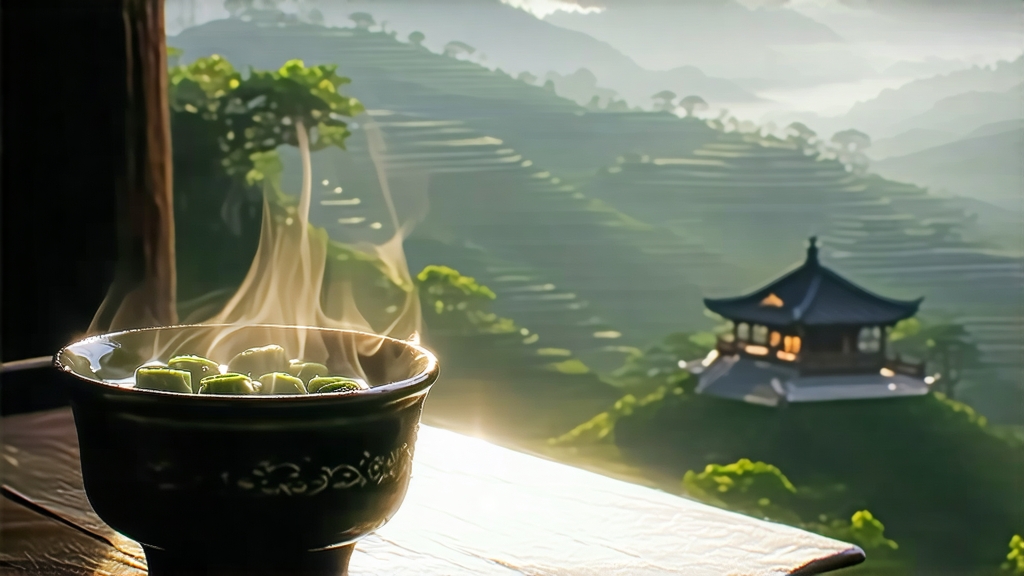
Alishan High-Mountain Oolong is not merely a tea; it is a liquid diary of Taiwan’s central mountain range, written in fog, forest fragrance, and the patience of generations. International drinkers often meet oolong through the darker, roasted styles of Fujian or Guangdong, yet Alishan offers a greener, more floral face of the category—one that whispers rather than shouts, and in doing so has redefined what “oolong” can taste like on the global stage.
History: From Frontier Forest to World-Class Leaf
Tea plants first ascended Alishan (literally “Ali Mountain”) in the late 19th century when the Qing court encouraged Han settlers to cultivate previously forested slopes. The initial plantings were seedling tea, Camellia sinensis var. sinensis, brought from Fujian’s Wuyi and Anxi counties. For decades the leaf was sold as “cut oolong,” a semi-oxidized filler blended into lower-grade exports. The pivotal moment arrived in 1981, when the Taiwan Tea Research and Extension Station released the TTES #12 cultivar (nicknamed “Jin Xuan” or “Milk Oolong”) and encouraged farmers above 1,000 m to experiment with light oxidation. Overnight, the cool, misty microclimate—once considered a handicap for ripening fruit—proved ideal for locking in delicate aromatics. By the early 1990s Alishan spring teas were winning island-wide competitions, and Japanese and American buyers began quoting elevations on menus the way French vignerors quote crus. Today, genuine Alishan High-Mountain Oolong fetches prices rivaling top Darjeeling, yet its story is still told in the dialect of the Tsou indigenous tribe who believe the mountain is home to the spirit of the white deer: every plucking is a dialogue with the forest.
Terroir: Where Clouds Become Flavor
Alishan is not a single peak but a 20-km spine running northeast–southwest, threaded by the Tropic of Cancer. Plantations cluster between 1,000 m and 1,400 m on leeward slopes that trap Pacific moisture. Night temperatures can drop to 8 °C even in May; the diurnal swing slows photosynthesis, doubling the concentration of L-theanine and geraniol compared with lowland teas. Ultraviolet intensity at this altitude boosts catechin polymerization, giving the finished leaf a luminous jade color and a natural “cream” note that cannot be replicated at sea level. The soil is acidic laterite rich in iron and magnesium, drained by bamboo groves and camphor trees whose fallen leaves add a whisper of menthol to the forest floor. Walk through an Alishan garden at dawn and you taste the air: wet cedar, orchid, star anise, and something indefinably cool that locals simply call “yun,” a Chinese word that translates roughly as “lingering echo.”
Cultivars: Two Sisters of the Mist
While many elevations and townships market “Alishan oolong,” purists recognize two cultivars that best translate terroir into cup.
-
Qing Xin (literally “Clear Heart”) is the older, noble bush. Its small, serrated leaves yield a liquor the color of pale chardonnay, with lilac, honeydew, and a finish of white pepper. Because Qing Xin is slow-growing and susceptible to blight, it is planted on the steepest, most inaccessible terraces—often harvested by rope teams.
-
Jin Xuan (TTES #12) was bred for creaminess. When processed with minimal oxidation and zero roasting, it releases a natural milk-lactone aroma that convinces novices artificial flavoring was added (it was not). The cup is silkier, slightly sweeter, but less age-worthy; after a year the milky note fades into magnolia.
Both cultivars are plucked by hand in the “three-leaf-and-a-bud” standard, but the picking window is brutally short: only 6–8 days each spring and autumn when the morning fog lifts just enough for leaf moisture to drop to 68 %. Miss the window and the enzymatic balance needed for the signature “green heart, red edge” disappears.
Craft: Converting Mountain Energy into Aroma
Alishan oolong is the most minimally oxidized of all traditional oolongs—usually 12–18 % compared with 30–50 % for Da Hong Pao. The craft unfolds like a choreographed drama across